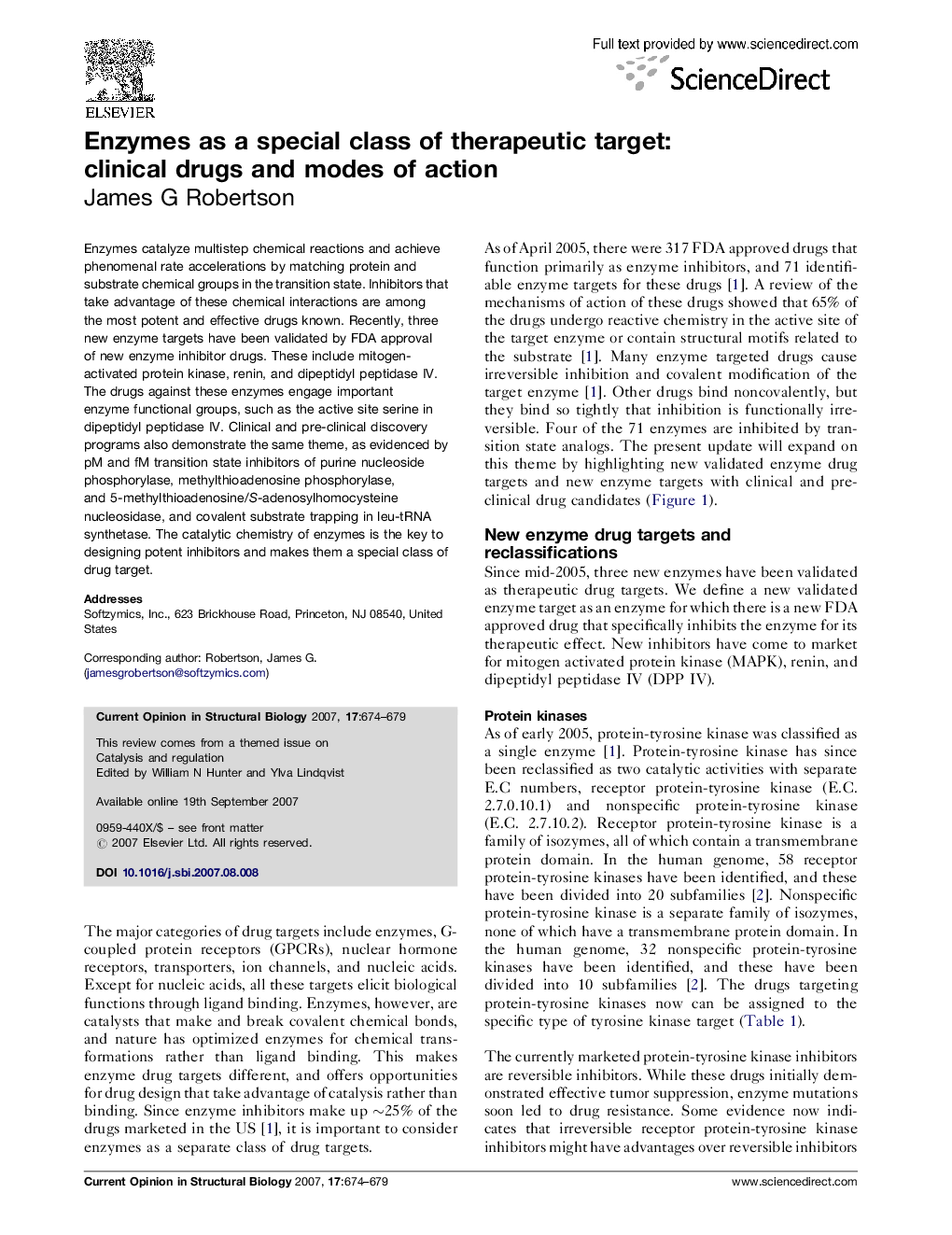| Article ID | Journal | Published Year | Pages | File Type |
|---|---|---|---|---|
| 1979643 | Current Opinion in Structural Biology | 2007 | 6 Pages |
Enzymes catalyze multistep chemical reactions and achieve phenomenal rate accelerations by matching protein and substrate chemical groups in the transition state. Inhibitors that take advantage of these chemical interactions are among the most potent and effective drugs known. Recently, three new enzyme targets have been validated by FDA approval of new enzyme inhibitor drugs. These include mitogen-activated protein kinase, renin, and dipeptidyl peptidase IV. The drugs against these enzymes engage important enzyme functional groups, such as the active site serine in dipeptidyl peptidase IV. Clinical and pre-clinical discovery programs also demonstrate the same theme, as evidenced by pM and fM transition state inhibitors of purine nucleoside phosphorylase, methylthioadenosine phosphorylase, and 5-methylthioadenosine/S-adenosylhomocysteine nucleosidase, and covalent substrate trapping in leu-tRNA synthetase. The catalytic chemistry of enzymes is the key to designing potent inhibitors and makes them a special class of drug target.
